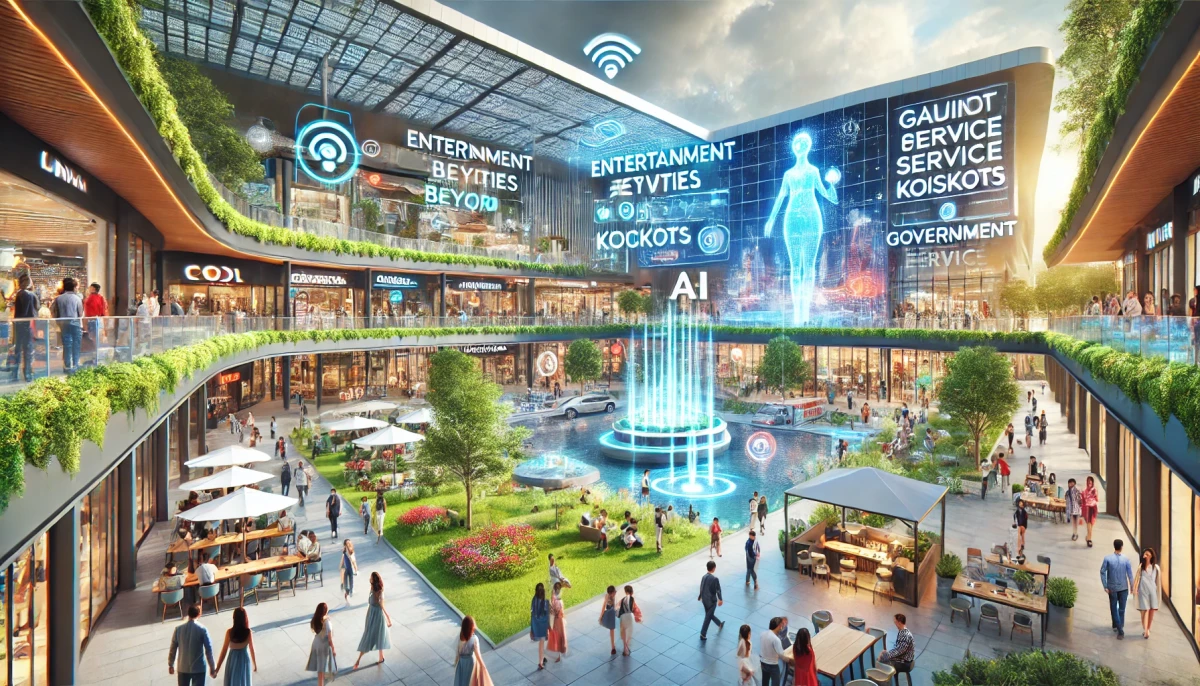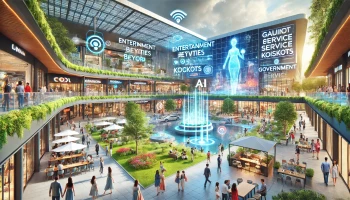Here is the translation of the uploaded document into English:
Where Are Shopping Malls Heading?
(An Economic and Social Article)
Economic Perspective on Shopping and Service Centers (Malls)
It might be thought that shopping and service centres are merely for shopping, but they hold more importance than most assume. Even owners, municipal officials, investors, and economists might overlook this for several reasons, such as climate extremes, services, and security.
Economic Perspective on Shopping and Service Centers
Shopping and service centres are integral to a country's economy, generating financial returns through taxes and fees, workforce employment, and government services provided within the malls. This also applies to banks and financial institutions, including beneficiary loans and financial deposits. Furthermore, property investors, capital owners, brands, and store/service owners achieve profits based on their activities.
Feasibility studies for malls, in general, or for purchasing and leasing spaces within them are essential to understanding the market and reducing risks. Here, I will focus on a part of economic feasibility: market research.
What Is Market Research?
Market research is used to understand public needs and preferences by employing data collection and analysis tools. These tools include surveys, interviews with specific groups, online platforms, applications, and observations. I will elaborate on the role of observations in data collection and analysis.
Data Collection Through Observations
- Direct Observation: Tracking and measuring consumer behaviour face-to-face.
- Indirect Observation: Measuring behaviour through cameras in malls and stores, analyzing texts and videos, and social media platforms.
While many assume cameras are solely for security and theft prevention, they also:
- Monitor employee performance and behaviour with customers.
- Help reorganize stores and reposition products.
- Measure consumer behaviours, preferences, and needs.
- Document events for later analysis and data correlation.
- Assist in central monitoring remotely, randomly inspecting and addressing crowding by redistributing employees.
- Use sensors to observe customer interactions with products.
Since malls are diverse environments serving various activities, they are ideal for studies and research, yielding accurate results and effective developmental practices.
Social Perspective on Shopping and Service Centers
The community plays a significant role in improving and developing malls by integrating trade with services, and introducing or modifying non-commercial activities such as entertainment, cinemas, gaming halls, gyms, and governmental services. Events, national and local celebrations, and social activities can also be hosted in malls.
Why Has the Community Shifted Mall Patterns Toward Adding Non-Commercial Services?
- Weather: Extreme weather conditions, such as severe cold, heat, rain, or snow, drive people to malls for shopping, services, and leisure.
- Safety: Malls are perceived as safe spaces equipped with advanced security systems and bustling with visitors and employees, fostering a sense of security and familiarity.
- Space: Large, attractive spaces suitable for hosting national, local, and social events.
- Services: Offerings like cafés, restaurants, parking, automated services, gaming zones, and seating areas.
- Organization: Designed for fluid navigation with maps for ease of access.
- Gathering: A place for families and friends to meet, often cheaper than alternatives, offering activities for children and flexibility for events.
Future Perspective on Shopping and Service Centers
Continual mall development must align with evolving marketing trends, updated classifications, stores, and the changing demographic and environmental landscape.
Effective Mall Classification
Malls can be classified by:
- Size: Small, medium, large, or massive malls.
- Geographic Location: Urban or suburban.
- Activity Type: Specialized or multi-activity malls.
- Target Audience: Family-oriented, budget-conscious, or luxury-focused.
- Architectural Design: Modern, traditional, or theme-based.
Urban Planning and Population Statistics
Population growth, industrial and economic city expansion, or government initiatives to rehabilitate rural or border areas require urban planning. This involves establishing infrastructure, telecommunications, water, electricity, transportation, and other services, tailored to the climate, environment, and resident needs.
Research and Information Centers
Research and data centers, affiliated with universities, governmental, or private entities, should provide demographic, educational, and income-related insights. Such information benefits developers, investors, and tourists, aiding in design adjustments, service improvement, and addressing common issues like noise in enclosed malls.
Technology and Marketing Strategies
Innovations like cameras, interactive displays, AI, virtual reality devices, and automated systems are reshaping the retail landscape. As free shipping and delivery services grow, stores might shift from selling products to displaying and promoting them, staying embedded in customers' memories.







-tiny.webp)